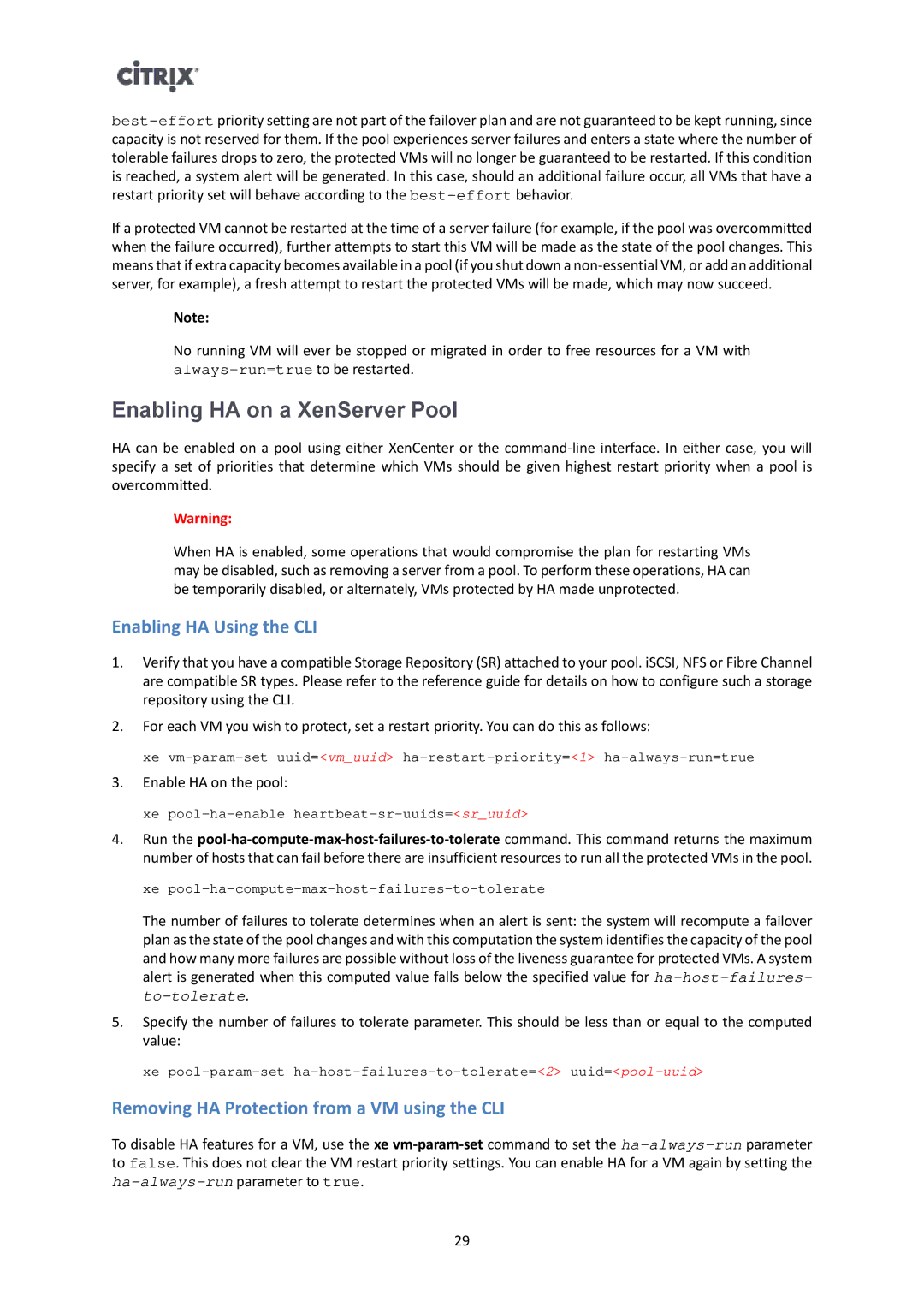If a protected VM cannot be restarted at the time of a server failure (for example, if the pool was overcommitted when the failure occurred), further attempts to start this VM will be made as the state of the pool changes. This means that if extra capacity becomes available in a pool (if you shut down a
Note:
No running VM will ever be stopped or migrated in order to free resources for a VM with
Enabling HA on a XenServer Pool
HA can be enabled on a pool using either XenCenter or the
Warning:
When HA is enabled, some operations that would compromise the plan for restarting VMs may be disabled, such as removing a server from a pool. To perform these operations, HA can be temporarily disabled, or alternately, VMs protected by HA made unprotected.
Enabling HA Using the CLI
1.Verify that you have a compatible Storage Repository (SR) attached to your pool. iSCSI, NFS or Fibre Channel are compatible SR types. Please refer to the reference guide for details on how to configure such a storage repository using the CLI.
2.For each VM you wish to protect, set a restart priority. You can do this as follows:
xe
3.Enable HA on the pool:
xe
4.Run the
xe
The number of failures to tolerate determines when an alert is sent: the system will recompute a failover plan as the state of the pool changes and with this computation the system identifies the capacity of the pool and how many more failures are possible without loss of the liveness guarantee for protected VMs. A system alert is generated when this computed value falls below the specified value for
5.Specify the number of failures to tolerate parameter. This should be less than or equal to the computed value:
xe
Removing HA Protection from a VM using the CLI
To disable HA features for a VM, use the xe
29
